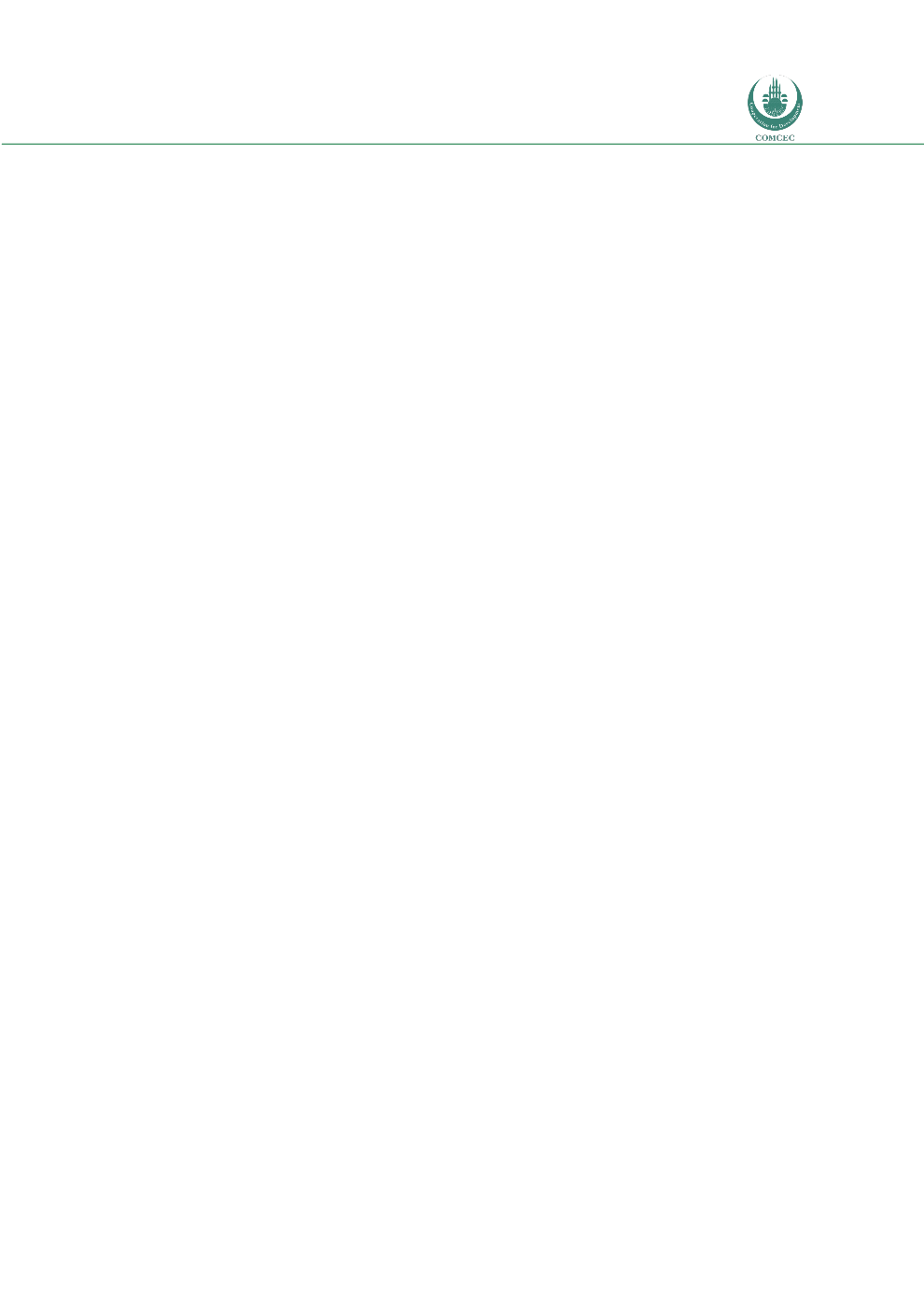

Risk Management in
Islamic Financial Instruments
53
over 50 countries. The Dow Jones covers the most with 69 countries. The Dow Jones World
Islamic and MSCI World Islamic indices have fared better since 2008, compared to their
conventional counterparts, the Dow Jones World and MSCI World Indices. The better
performances of the Islamic indices are due to the Islamic indices having fewer constituent
companies and higher market capitalizations. Furthermore, the Islamic indices experienced
growth in the number of company constituents in the basic materials, healthcare, and
technology sectors. Since growth in financial sector services was smaller, the Islamic indices
were less affected by the financial crisis (IFSB 17-19).
Islamic funds have grown from USD 29.2 billion in 2004 to USD 64 billion in 2012. The funds
are retail driven and the main asset class is equities, which make up half of all assets. Islamic
funds have grown due to many reasons, including the rising wealth in Muslim countries. The
funds’ assets under management are heavily concentrated in Saudi Arabia and Malaysia, which
possess 70.3% of global assets. Another factor influencing the growth of Islamic funds is the
attractiveness of commodity funds after the financial crisis. According to the IFSI Stability
Report 2013, commodity funds were the “best net performing asset class for Islamic investors
between 2007 and 2011, growing by 41.81% (23).” Even with the substantial growth, Islamic
funds face challenges in their lack of sophistication and market depth, as well as comparatively
low volumes in the equity and fixed income markets (IFSB 21-23).
The sukuk market has grown due to a greater demand for market liquidity, fixed-term
investments and credit facilities. Short-term sukuk programs were first introduced in the mid-
2000s. The sukuk market saw a CAGR of 45.2% between 2004 and 2012, with the market
growing from USD 6.6 billion to USD 131.2 billion. Corporate sukuk issuance has surpassed
pre-crisis levels due to declines in the cost of borrowing. Malaysia has the largest and most
developed sukuk market that attracts both local and foreign companies. More countries are
developing sukuk markets, including several MENA countries. Saudi Arabia and the UAE have
the strongest sukuk markets amongst the GCC, and Libya, Egypt and Tunisia are making efforts
to create a regulatory environment that will allow for sukuk markets in the future. The 2008
financial crisis negatively affected the sukuk market.
There has been greater volatility in sukuk yields due to investor uncertainty concerning the
market. Post-crisis, investors sought out short-term, high quality papers in place of riskier,
long-term investments. However, Sukuk yields did perform better, compared to U.S. ten-year
treasury bonds between 2011-2012. Challenges that sukuk development faces are the after
effects of the 2008 financial crisis and Europe’s debt crisis, as the United States implements
more risk-adverse regulations and European countries adopt greater austerity measures.
Furthermore, investors perceive sukuk to be a costly product, due to the added expenditures
on Shariah compliance, the complexity of transactions and a lack of precedent on performance
(IFSB 24-32).
3.5. LIQUIDITY MANAGEMENT: PRUDENTIAL REGULATION AND
LIQUIDITY INFRASTRUCTURE
According to Iqbal, risk management instruments and mechanisms are underdeveloped in the
IFSI. A better understanding of the environment is necessary to monitor and mitigate risk.

















